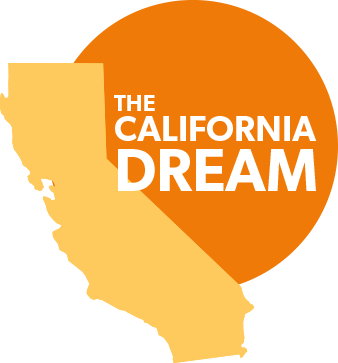Dominant narratives, says Dr. Tiffany Manuel of TheCaseMade, “are common explanations, beliefs, or ways of thinking that get reinforced through culture (e.g., through the stories we tell and our culture norms) that often make it more difficult for people to see their collective interest in having systems designed to produce equitable outcomes. Because dominant narratives are so normalized through their repetition and authority, they have the illusion of being objective and apolitical, when in fact they are neither.”
Narratives of housing in California are no different — there are key narratives that dominate the definition of the problems and the discussion of the best solutions. Some of those narratives work in favor of the solutions that housing advocates propose; others against.
Twelve Dominant Narratives
Twelve narratives are present in the media environment in California. These narratives surfaced after reviewing 65,385 articles from 906 sources between May 1, 2019 and December 31, 2022. The presence of these narratives in the public sphere influence the public discussion on narrative and can influence how Californians think about housing. Some of those narratives work in favor of the solutions that housing advocates propose; others against. See the report for more details.
Narratives Differ on Stance Toward Government Intervention and Housing Development
1.
No one can afford to live here.
The housing crisis is getting out of hand, and it seems like no one can find a place to live in California, let alone one that is affordable. Californians are running out of options in this strained housing system—we need solutions.
2.
Housing is a human right
It is a moral failing that there are so many Californians who lack consistent or permanent shelter. To fulfill California’s promise, it is our duty to ensure everyone, regardless of income, race, or age, has safe, stable, affordable housing.
3.
The rent is too damn high.
California renters are under attack from speculative developers, predatory landlords, and an out-of-control free market. We need politicians to support renters’ rights now and end the rent insanity.
4.
Housing affordability now!
There is not enough housing in California, especially housing that is affordable. We must provide all Californians with the opportunity to secure safe and affordable housing that satisfies their needs.
5.
Build baby, build.
There is one simple and undeniable solution to the housing crisis in California—we must increase supply. We need more of every type of housing, especially near major metro and transit areas. We must do whatever it takes to increase our housing supply.
6.
Rectify housing injustices.
Current housing issues did not just arise out of nowhere. Rather, they are the result of decades of systematic housing and social issues, such as redlining, gentrification, forced displacement, racial segregation, and discriminatory housing practices. We must realize that solving these problems requires reinventing the systems that failed us.
7.
Holding California back
The current housing crisis in California is not only having negative impacts on California’s citizens, but also is a drag on the Californian economy. The housing crisis is a drain on California’s economy and its future viability, and we need to pull together as Californians and address it now before it’s too late.
8.
Stop displacing residents.
Our neighborhoods are under attack from the forces of gentrification. It’s time to band together and protect our neighborhoods from being overrun by gentrification.
9.
Protect the character of “our community”
Greedy developers and politicians must stop trying to force more housing construction and instead prioritize the community of homeowners that already live and pay taxes here. If we allow a building boom in our backyards, the result will be lower property values, out-of-control traffic, and crime from those with no tie to our community.
10.
Housing will not solve homelessness
Yes, housing is expensive in California, but expensive housing is not causing the surge in homelessness plaguing our cities. Drug addiction, mental illness, and the influx of vagrants and illegals coming here for the benefits and weather are the main reasons our streets are filled with the homeless. California has become too much of a nanny state, and people need to be taught to provide for themselves. Giving people housing will only attract more homeless people and turn neighborhoods into dens of drug use and crime.
11.
The Market knows best
More government intervention is the last thing we need to solve the housing crisis-it’s California’s regulatory overdrive that caused this “crisis” in the first place. Politicians and local governments need to relinquish control and cut regulation to unleash the free market in order to solve this problem.
12.
California is full
It is a privilege to live in California; one that homeowners worked hard to obtain. We don’t need more people, more jobs, or more building; we need less! We need to start telling people that if they don’t live here and can’t afford to live here to stay away or get out.
Source: Protagonist
For the full report — including details on which of these narratives dominate in different communities across the state — download the updated media landscape analysis report (2022). For further thinking on common housing messages — and how they backfire — see also “You Don’t Have to Live Here” from Frameworks Institute and Enterprise Community Partners authored by Dr. Tiffany Manuel.
High Saliency on the Problem, but Low Alignment on Solutions
Another thing that’s vital for housing advocates to understand is the very high salience of housing among California voters: across all mindset segments, housing and homelessness were consistently ranked among voters’ top concerns.
This is good news for housing advocates, who don’t need to raise awareness about the problem or stoke the call for solutions — California voters already see these issues as urgent and important. Housing Affordability and Homelessness rank among the top five concerns across all mindsets.

